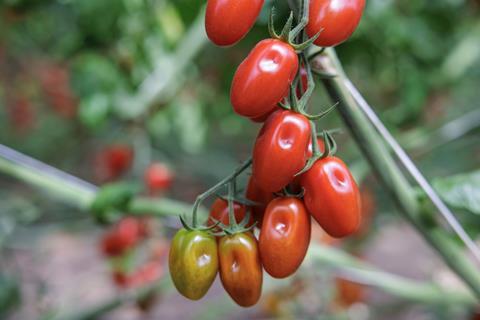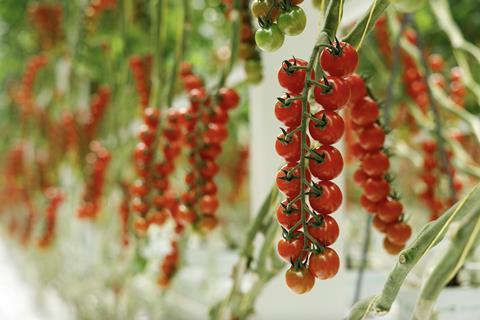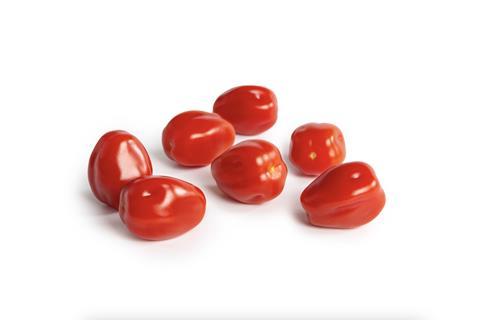Manuel Hernández, tomato crop specialist at Rijk Zwaan Iberica, discusses the company’s breakthrough ToBRFV-resistant varieties, market opportunities, and how technology is transforming tomato production amid global challenges

Ahead of the Fruitnet Tomato Congress, which takes place on 11-12 November in Malaga, Spain, Fresh Focus Tomato speaks to Manuel Hernández – tomato crop specialist at Rijk Zwaan Iberica – about the seed specialist’s latest developments in the fight against ToBRFV, exciting varieties to keep an eye on, and the challenges and opportunities facing the business today.
Hello Manuel. What has Rijk Zwaan been focusing on when it comes to tomatoes?
Manuel Hernández: One of the most significant recent developments in our tomato business has been the creation and introduction of a new portfolio of varieties with high resistance to Tomato Brown Rugose Fruit Virus (ToBRFV). This innovation provides an effective and reliable solution to one of the most pressing challenges faced by growers worldwide. By improving crop security and ensuring consistent fruit quality, these new varieties help maintain high standards of production and strengthen the competitiveness of our partners across the value chain.
Let’s look at ToBRFV. What are your main developments in this area?
MH: Rijk Zwaan has made major strides in the fight against ToBRFV. Our latest breakthrough has been the commercial introduction of varieties with high resistance (HR) to the virus. This represents a crucial step forward for growers worldwide, as it helps safeguard production, improve crop reliability, and ensure continuity in the supply chain. These resistant varieties are the result of years of research and close collaboration between breeders and producers.
Which of these varieties are showing the most promise?
MH: We are currently observing excellent results in several ’Rugose Defense’ varieties, specifically developed to perform under different growing conditions and to provide high resistance to ToBRFV. Among them are the round cherry tomatoes Cuarzyta RZ, Coralyta RZ and Kemery RZ; cherry plum types Abrametto RZ and Laurencetto RZ; and Hyrule RZ, Hateno RZ and Proventura RZ, which belong to the premium cherry-on-the-vine segment.
In addition, we have recently introduced a new rootstock range — Callun RZ, Brantley RZ and Tirian RZ — designed to deliver greater vigour, productivity and, most importantly, an effective solution against ToBRFV.

Aside from disease resistance, what other traits do Rijk Zwaan’s customers demand from its products?
MH: Customer expectations vary across the value chain, but overall, there is a strong demand for varieties that combine yield stability, shelf-life, and flavour. Producers seek materials that are productive and reliable under diverse climatic conditions, while retailers prioritise consistent quality and presentation.
Consumers, on the other hand, look for freshness, taste, and good value for money. Therefore, our breeding efforts focus on offering balanced solutions that satisfy the needs of every link in the chain, fostering long-term consumer loyalty.
How strong is the global tomato market, and what opportunities are there for further growth – as well as threats to the business?
MH: At present, the tomato market is showing signs of stabilisation, although there is still a degree of uncertainty regarding varietal transitions. In certain segments, growers and retailers are yet to establish new benchmark varieties, which opens the door for innovation and differentiation.
There is strong potential for growth in offering sustainable, high-quality production throughout the year. Achieving this will require greater investment in advanced greenhouse technologies, particularly in Mediterranean regions, to ensure consistency and resource efficiency.
Consumers are increasingly aware of sustainability and demand transparency regarding production practices. Companies that can demonstrate environmentally responsible production and reduced carbon footprints will be better positioned in the market.
As for threats, labour shortages continue to be a major concern for agricultural producers, affecting operational efficiency.
Climate change is another significant threat, as rising temperatures and prolonged heat waves are leading to production challenges and reduced yields.
How does the current global environment affect a company like Rijk Zwaan, in an age of tariff uncertainty, geopolitical instability, climate change, labour shortages and more?
MH: The current geopolitical context inevitably affects our operations. As we export seeds from Europe to many parts of the world, we are exposed to protectionist measures and tariff fluctuations imposed by certain countries.
In addition, ongoing armed conflicts and regional instabilities disrupt food production and logistics in affected areas.
However, as part of the primary sector, our industry tends to be somewhat more resilient. Nonetheless, we continue to closely monitor these dynamics to ensure the continuity of supply and to support our partners with flexibility and responsiveness.

How are technological advancements benefitting the industry?
MH: Technology is transforming tomato production in multiple ways. The use of artificial lighting systems in northern and central Europe is reshaping traditional production and distribution flows, allowing year-round production and reducing dependence on southern growing regions.
Additionally, semi-closed greenhouses, automated fertigation systems, and digital tools for crop monitoring and forecasting are becoming increasingly common. These innovations help optimise resource use, anticipate diseases, and improve overall efficiency.
Looking ahead, technology will continue to play a key role in achieving more sustainable, data-driven, and resilient production systems, supporting both environmental goals and market competitiveness.



